Nepal is the land of ancient culture, science, and civilizations. We can see these ancient mystics and histories inscribed on the cultural heritage sites in Nepal. Out of many, 11 historical places have made it to the list of World Heritage maintained by UNESCO.
Let’s see which historical places in Nepal made it onto the list of UNESCO World Heritage Sites.
Table of Contents
World UNESCO Heritage Sites in Nepal
Pashupatinath Temple
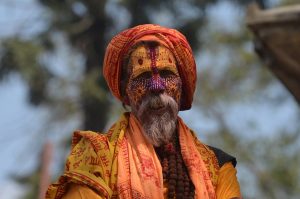
Jogi Baba in Pashupatinath Temple
Existing since 400 AD, the Pashupatinath temple is circumambulation with other smaller temples, sculptures, tantric living homes, and ashrams (hermitages for religious retreats).
Pashupatinath means “lord of the animals,” which is also the national deity of Nepal. This shrine is not just a masterpiece in architecture but also an immense attraction to all Hindus all over the world. UNESCO enlisted the Pashupatinath temple and its surroundings as a World Heritage Site in 1979 AD.
The place has many other attractions. The holy Bagmati River flows alongside the shrine. There’s a crematory on the backside of the holy place. The place of worship has silver sheets on the doors and golden sheets on the roof. Its main eccentric attraction is a unique Shiva Linga that displays the eight faces of Lord Shiva. This miracle place was also unharmed during the 7.8 magnitude earthquake that hit Nepal in April 2015.
If you are planning a visit to Nepal or a Kathmandu tour for a day, you shouldn’t miss this holy shrine of Pashupatinath, which should be included in your itinerary.
Swayambhunath Stupa
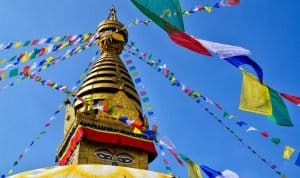
Swayambhunath Stupa
Witnessing the heart-gratifying blend of Hinduism and Buddhism in religious tolerance, the Swayambhunath site is an ancient religious complex. The Tibetan name of the stupa gives meaning to “sublime trees.” The tourist destination is famous for five Dhyani Buddhas that represent distinct enlightened consciousnesses.
Similarly, some people also know the Buddhist stupa by the name “Monkey Temple“. UNESCO included the monument, including other sculptures, as a World Heritage Site in 1979 AD.
Soyambhu has unique features and is one of the biggest shrines for Buddhists all over the world. The enormous Swayambhunath stupa has two eyes and a curly nose in between. The eyes in the stupa represent wisdom eyes, and the question-mark-looking nose represents unity.
To reach the top of the main stupa, you need to climb 365 steps. While you climb, you visualize a huge brass-plated lightning bolt adorned with animals as per the Tibetan calendar. Finally, the hilltop provides a gorgeous view of the Kathmandu Valley and the nearby hills.
The stupa is in the center of Kathmandu. Anyone can reach there by a 30-minute bus ride from the Tribhuvan International Airport.
Boudhanath Stupa
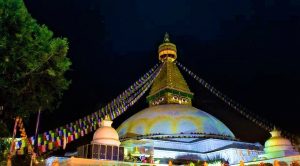
Boudhanath Stupa
Discover the temple within you in the Boudhanath Stupa, symbolizing serenity for the people. This skyline-dominating stupa had eyes on all its sides, personifying awareness with the images of the meditational Buddha inset behind copper prayer wheels.
Boudhanath Stupa is the largest stupa in Nepal. The holy place was built after the Mughal invasions during the 14th century. The copper prayer wheels engraved with the handwritten mantra are an aid to accumulating wisdom and meditation.
Boudhanath Stupa was enlisted as a World Heritage Site in Nepal by UNESCO in 1979 AD. Since then, the popularity of the place among international travelers has significantly increased. You can enjoy the buzzing spirituality from morning to night in an outstanding mandala-designed stupa.
Also, it is a divine place for Buddhists and Hindus all over the world. So, there’s a vast crowd during Buddhist festivals such as Buddha.
Kathmandu Durbar Square
Durbar Squares are plazas’ paradigm for Nepalese-built heritage. The Malla Kings, who built Kathmandu Durbar Square in the twelfth and eighteenth centuries, were former rulers of Kathmandu during that time. These royal squares lie opposite the old royal palace of the former Kathmandu Kingdom.
The royal palace is rich in Nepal’s history. It is also the central cultural hub of synergies related to tantrism, Buddhism, and Hinduism. The Hanuman Dhoka, European-style architecture, courtyards, sculptures, stupas, temples, etc. display the ancient royal taste.
Kathmandu Durbar Square is renowned for being the site for holy ceremonies, cultural rituals, religious significance, coronations, and other royal events.
In 1979 AD, UNESCO enlisted Hanumandhoka Durbar Square in its list of World Heritage Sites. The royal mansion is in the center of the capital city, and anyone can reach it in a 20-minute bus ride from Tribhuvan International Airport.
Patan Durbar Square
Patan Durbar Square is a place full of shrines with graceful carvings, ancient royal palaces, and temples. The square celebrates Malla’s marvelous reminiscence of unique Newari culture and architecture in 55 major temples, artisans, and Buddhist monasteries, as well as a spectacular street carnival called Jatra. We can see the flourishing art of the artisans in Thangkas, along with metal crafts.
Besides, we can see marvelous stone and wooden crafts on the Durbar premises. One of a kind, the beautiful Krishna temple on the west side of Patan Durbar Square displays ancient stonework.
Patan Durbar Square lies in the south of Kathmandu. Hence, we can reach the destination by a 40-minute bus ride from Tribhuvan International Airport.
Bhaktapur Durbar Square
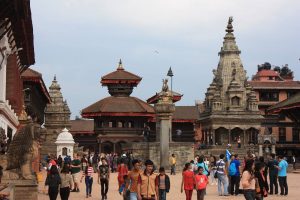
Bhaktapur Durbar Square
Another interesting Durbar Square architectural masterpiece is Bhaktapur Durbar Square. The famous tourist destination has Shikhara-style temples, pagoda temples, a 55-window palace, Nyatapola Temple, Bhairavnath Temple, the Golden Gate, pottery squares, and many more. UNESCO enlisted Bhaktapur Durbar Square as a World Heritage Site in Nepal in 1979.
Bhaktapur, the ‘City of Devotees’, also has a museum of medieval art and architecture inside Durbar Square. The Malla palace shows the remnants of how an Eastern culture used to be. Also, you will get every small utility that looks like a temple, dwelling sites, all gossip centers, traditional music, and water sources with tremendous ancient enthusiasts.
Changu Narayan Temple
Kathmandu, also known as the ‘’City of Temples,” offers many aesthetic masterpieces, the science of architecture, and spiritual energy.
One outstanding example is the Changu Narayan, a sixteen-hundred-year-old temple. It is a two-story pagoda-style temple enveloped by ancient carvings and statues that stands on a hilltop on the outskirts of the Bhaktapur District in Nepal. This is the temple of Lord Vishnu. And there’s an immense crowd of Hindu devotees who worship Lord Vishnu during Haribodhani Ekadashi.
The main temple has mythical creatures like elephants, winged lions, ram-horned giraffes, and lions designed beautifully. Most interestingly, it is the oldest surviving temple from an artistic, cultural, religious, and historical perspective. Further, UNESCO also listed the temple as a World Heritage Site in Nepal in 1979 AD.
We can reach the oldest shrine on a 30-minute bus ride from Tribhuvan International Airport in Kathmandu. Besides, the Nagarkot Hiking Tour also takes you to the Changu Narayan Temple after a hike to Nagarkot Hill to see the spectacular sunrise and sunset.
Lumbini
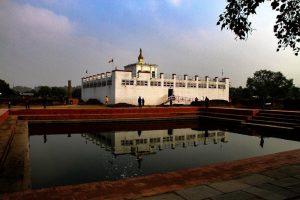
Lumbini, Birthplace of Gautam Buddha
The spiritual heart of all Buddhists lies in Lumbini, the birthplace of Gautam Buddha. The marvelous structure is a World Heritage Site in Nepal. UNESCO enlisted it in 1997 AD. Besides, it is a Buddhist pilgrimage center, and the archeological remains are the essence of this tranquil place.
Soak in the beauty of spectacular monasteries being built by Germany, China, India, France, Thailand, and many more. Along with the legacy it beholds, it has meditation centers and landscaped parks for the public as well.
There’s a grand celebration every year during Buddha Jayanti with ardor to mark the Buddha’s birth date. The whole place looks charming with colorful lights. They distribute clothes and food to the needy. The Lumbini committee also held a prize distribution ceremony to award the heroes.
If you visit Lumbini during Buddha Jayanti, you can see how grandly the Nepalese solemnize the remembrance of the birth of Buddha.
After adopting Buddhism, Emperor Ashoka visited Lumbini and constructed a stone pillar and four stupas in 249 BC. Today, the Ashoka Pillar is firm evidence to prove Nepal as the birthplace of Gautam Buddha.
Further, Lumbini lies in the Kapilvastu District of Nepal. We can reach the place after a 7-hour bus ride from the capital city.
Sagarmatha National Park
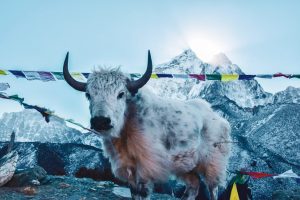
Yak in the Sagarmatha National Park
Sagarmatha is a noteworthy area recognized for its natural heritage, powerful geological young mountains, including Mount Everest, dramatic trails, glaciers, Gokyo Lake (famous for migrant waterbirds), and deep valleys. The faithfully preserved place accommodates rare species like musk deer, snow leopards, red pandas, etc.
This park is the proud roof of the world that connects the people of the earth, embracing natural beauty, the tallest mountains in the world, and the cultures and adventures of Nepal to the world.
Sagarmatha National Park is a natural world heritage site in Nepal, enlisted by UNESCO in 1979 AD. Today, you require a national park permit to enter the region. Besides, you can visit the area with any trek in the Everest region, such as the Gokyo Lake Trek, the EBC Trek, and the EBC with Three Passes Trek.
Chitwan National Park
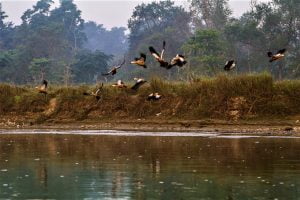
Bird Watching in Chitwan National Park
Chitwan National Park is a richly preserved biodiversity and ecosystem tucked between the pushed chuckles of Terai. It conserves natural habitats for an enormous amount of flora and fauna. These grassy plains serve as a shelter for many endangered animals of the world, like one-horned rhinos, and many bird species, like the giant hornbill and Bengal tigers.
The national park is one of the prominent heritage sites in Nepal, enlisted by UNESCO in 1979 AD. Taking a tour of Royal Chitwan National Park can be a treat for your eyes and your soul. It is one of the most cinematic wildlife-viewing national parks in Asia.
Medieval Palace Complex of Gorkha
Gorkha Durbar is an ancient palace and one of the must-visit heritage sites in Nepal. Located in Gorkha District, the area has the main palace on a hilltop, with attractions like Goraknath Cave and Kalika Temple on the adjacent sides. Besides, King Prithvi Narayan Shah, who united Nepal, used the Durbar. Hence, the place also holds a long history of the unification of Nepal.
After hiking uphill for about 2 hours from the center of Gorkha City, you reach the palace. From the top, you see amazing views of Ganesh Himal, green hills, and the entire Gorkha city. The terrace farm in the hills adds extra beauty to the place. Similarly, you can also visit an old museum at the bottom of a hill in the city.
Overall, Gorkha Durbar is an amazing cultural heritage site to visit in Nepal.
At the end
So, these were the UNESCO World Heritage Sites in Nepal. The country not only flaunts its unique triangular flag with the sun and moon under the flagship of the world’s highest peak, Mt. Everest but also houses the world’s bravest soldier. As brightly as it gets named “Land of the Fighters”, these people are the kindest, ever-smiling, and most resilient ones.
Take a cultural tour of Nepal to visit some of these amazing places. The unblemished topography is full of unique, phenomenal energy suitable for episodes of high-level spiritual well-being. And it’s home to unique cultures, traditions, and celebrations.
What makes Nepal the most beautiful country? One of the many reasons is that the world’s finest ornaments are designated as UNESCO World Heritage Sites.

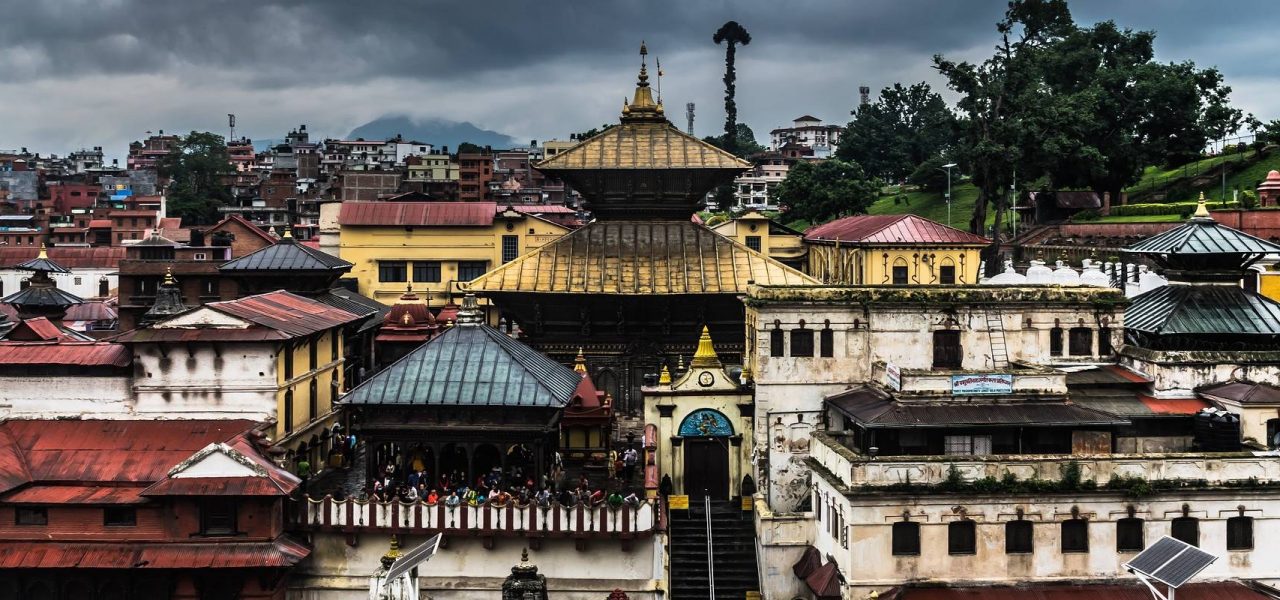


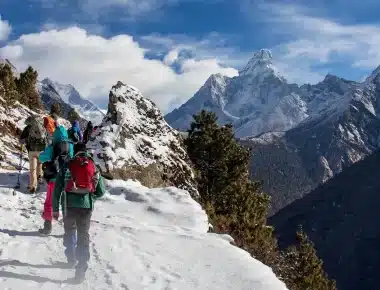
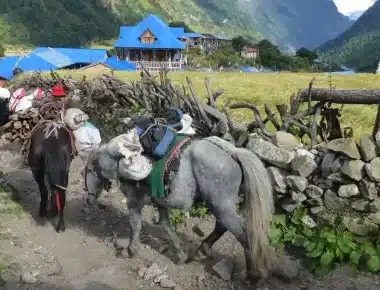
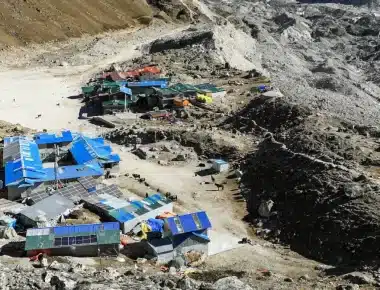
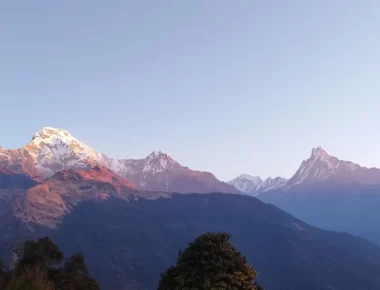

[…] being a mere capital that makes the immediate area to your heart. This city proudly places seven UNESCO enlisted world heritages of Nepal between its hilly slopes. Besides, there are many beautiful hikes around Kathmandu […]
[…] goddess, and ancestry. In fact, Kathmandu is the “City of Temples”. Also, out of 10 World heritage sites in Nepal, seven of them are in Kathmandu. Yes, seven of […]